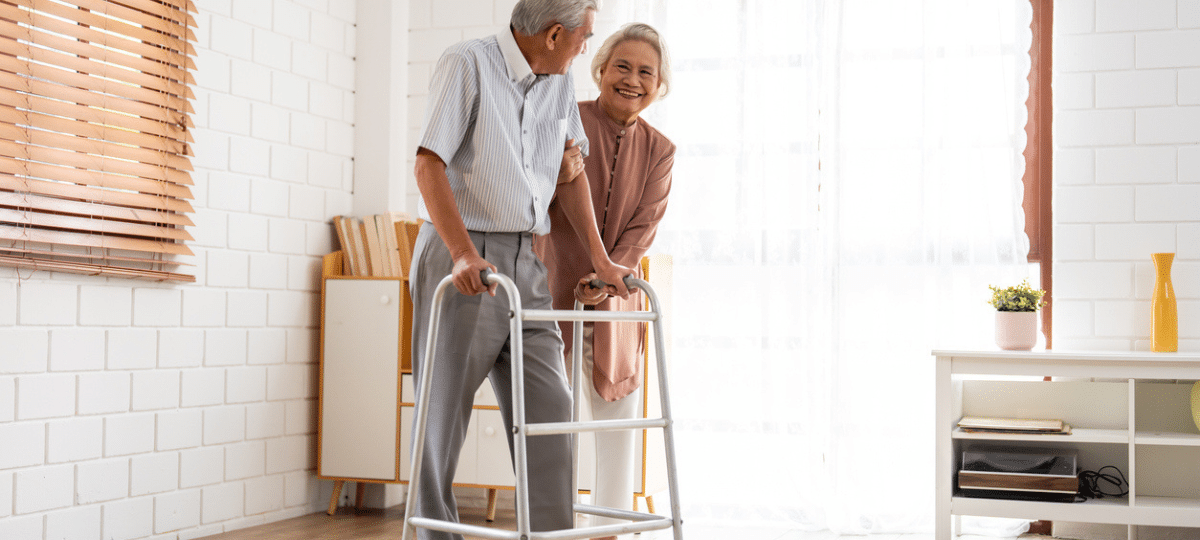Have you recently noticed that an older loved one is walking differently? If they have started to shuffle or drag their feet, it could mean there is a problem.
We all slow down as we age and walking slower is natural. But if someone is shuffling their feet, it may increase their likelihood of tripping or falling.
There are many reasons why someone might be shuffling their feet as they walk. It can happen now and then on slippery surfaces, but if it is happening all the time, here are some reasons you may want to know.
Factors That Change How Seniors Walk
Weak Hips and Legs
Our leg muscles and hips start to wear out and are not as strong as we age. It may be more difficult to lift our feet when we walk, causing our feet to drag.
There may be weakness in the feet, as well. When the muscles weaken due to age, it makes it more difficult to walk and decreases the flexibility in the legs, hips, knees, and feet.
Joint Pain
Pain in the joints due to aging or arthritis can make walking difficult. This pain can make it painful to walk, with pain in the knees, ankles, and hips.
The shuffling may be to compensate for the pain, as it is more difficult to take larger steps. Shuffling or dragging their feet could be less painful in the affected area.
Changes in Balance
Another change in our bodies as we age is our posture and balance. People may become stooped over and this can also affect the balance. With the balance off, it might be more difficult to walk.
The shuffling of feet can happen with poor posture. It makes it more difficult to lift up the feet and this leads to feet scuffing along instead of a regular up and down step.
Fear of Falling
A recent fall or even a near-fall can cause someone to be fearful of falling again. The shuffling steps may be simply to protect themselves as they may not be feeling too sure on their feet.
This is quite common if someone has experienced a fall or tripped. They become more vigilant about walking and often walk slower with much more care out of fear of falling.
Decreased Vision
If someone can’t see ahead of them or the ground as clearly as they used to, they may shuffle their feet as a way of feeling their way along. This can be from a fear of tripping or stepping on something.
When they are uncertain about where they are walking, it is a safety measure to make sure there are no obstacles by shuffling or dragging their feet to clear the path ahead.
Medication
Dragging or shuffling feet can be a side effect of some medications they are taking. It might make them more lethargic, it might make them numb in certain areas, like legs or feet, and it may even cloud their brain function.
Certain medications can cause people to walk with a lopsided gait. This can increase the chances of falling and the person may be shuffling their feet in order to maintain balance.
Neurological Conditions
There are many different neurological issues that can cause a shuffling gait. Parkinson’s disease is the most common for that, but there are more.
Stroke, cerebral palsy, multiple sclerosis, and others can cause someone to walk with a shuffle or off balance. Even a head injury can cause someone to start shuffling their feet as they walk.
Poorly Fitting Footwear
If someone is wearing shoes that are too big, they may shuffle their feet in order to keep the shoes on. This can be any type of shoe, boot, or slipper.
Older people don’t often complain about things like that, so it can actually go on for some time. This is quite common, in particular, for people living with memory loss or dementia.
Taking Action for Better Mobility
If you or a loved one has started shuffling their feet, don’t assume it’s just a normal part of aging that must be accepted. Many causes of altered walking patterns can be successfully addressed with proper medical care, physical therapy, and safety planning. Fear of falling, one of the most common reasons for shuffling gait, often creates a harmful cycle where anxiety leads to reduced activity and actually increases fall risk over time.
Medical alert systems with automatic fall detection can help break this cycle by providing peace of mind – when someone knows help will come automatically if needed, they’re often more willing to maintain normal walking patterns and stay active.




